April /Aibreán
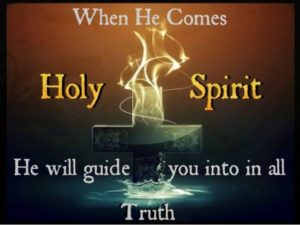 The month of April is dedicated to The Holy Spirit. The first eleven days of the month fall during the season of Lent which is represented by the liturgical color purple — a symbol of penance, mortification and the sorrow of a contrite heart. The remainder of April falls during the Easter season which is represented by the liturgical color white — the color of light, a symbol of joy, purity and innocence (absolute or restored).
The month of April is dedicated to The Holy Spirit. The first eleven days of the month fall during the season of Lent which is represented by the liturgical color purple — a symbol of penance, mortification and the sorrow of a contrite heart. The remainder of April falls during the Easter season which is represented by the liturgical color white — the color of light, a symbol of joy, purity and innocence (absolute or restored).
After our solemn commemoration of the last days and death of Our Lord we will spend the month of April celebrating. As Spring breaks forth even nature will join us as buds and blooms begin to surface and we spend this month basking in the joy of the Resurrection. We continue throughout the entire month our cry, “Christ is risen, Christ is truly risen.”
The Holy Father’s Intentions for the Month of April 2020:
Freedom from Addiction
We pray that those suffering from addiction may be helped and accompanied.
http://popesprayerusa.net/
Calendar for Holy Week:
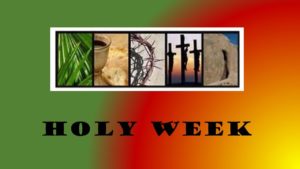 In Holy Week, the most reflective week in the Church’s year, we recall the following dates for prayer and reflection.
In Holy Week, the most reflective week in the Church’s year, we recall the following dates for prayer and reflection.
5th April – Palm Sunday
9th April – Holy Thursday
10th April – Good Friday
11th April – Holy Saturday
12th April – Easter Sunday
I draw your attention to two interactive workshops online from Trócaire, which will be held on the Monday and Wednesday of Holy Week, in final preparation for the Easter Triduum.
On Monday, 6th April at 11am, Trócaire will have a prayer/reflective workshop for families. To register please contact Anna Keegan on anna.keegan@trocaire.org and Anna will then send you on the webinar link.
On Wednesday, 8th of April at 11am, Trócaire will hold a workshop on Laudato Sí/Caring for our Common Home. To register, please contact Jane Mellett on jane.mellett@trocaire.org and Jane will then send on the webinar link.
April 2nd World Autism Awareness Day
The 2020 United Nations observance of the Day draws attention to issues of concern related to the transition to adulthood, such as the importance of participation in youth culture and the community self-determination and decision-making, access to post-secondary education and employment, and independent living.
Becoming an adult is typically equated with becoming a full and equal participant in the social, economic and political life of one’s community. However, the transition to adulthood remains a significant challenge for persons with autism because of the lack of opportunities and support devoted to this phase of their life. As a result, the completion of high school, when education and other supported services provided by some governments tend to cease, has often been likened to “falling off a cliff”.
Benjamin’s Story:
This video depicts young film-maker Benjamin Rosloff’s visit to the United Nations Headquarters in New York City and his interview with UN’s Secretary General, Ban Ki-Moon. Before the interview, Benjamin had the opportunity to explore and film the building including art and photo exhibits from all over the world. The video – produced for the World Autism Awareness Day (2 April 2016) – reflects on Benjamin’s future and how it relates to major global issues.
https://youtu.be/wjl7FVAXYbE
https://www.un.org/en/observances/autism-day
Some other International days which may be of interest to you are:
4 April International Day for Mine Awareness and Assistance in Mine Action (A/RES/60/97
5 April International Day of Conscience (A/RES/73/329)
6 April International Day of Sport for Development and Peace (A/RES/67/296)
7 April World Health Day [WHO] (WHA/A.2/Res.35)
12 April International Day of Human Space Flight (A/RES/65/271)
14 April World Chagas Disease Day [WHO]
20 April Chinese Language Day (Chinese)
21 April World Creativity and Innovation Day (A/RES/71/284)
22 April International Mother Earth Day (A/RES/63/278)
23 April World Book and Copyright Day (UNESCO 28 C/Resolution 3.18)
23 April English Language Day
23 April Spanish Language Day (Spanish)
23 April International Girls in ICT Day [ITU] (fourth Thursday of April)
24 April International Day of Multilateralism and Diplomacy for Peace (A/RES/73/127)
25 April International Delegate’s Day (A/RES/73/286)
25 April World Malaria Day [WHO]
26 April International Chernobyl Disaster Remembrance Day (A/RES/71/125)
26 April World Intellectual Property Day [WIPO
28 April World Day for Safety and Health at Work
30 April International Jazz Day (UNESCO 36 C/Resolution 39)
April 5th Palm Sunday of the Lord’s Passion
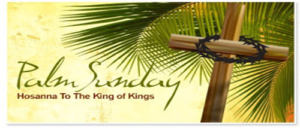
Palm Sunday is the final Sunday of Lent, the beginning of Holy Week, and commemorates the triumphant arrival of Christ in Jerusalem, days before he was crucified.
It commemorates Christ’s entry into Jerusalem for the completion of the Paschal Mystery. The Palm Sunday procession is formed of Christians who, in the “fullness of faith,” make their own the gesture of the Jews and endow it with its full significance. Following the Jews’ example, we proclaim Christ as a Victor… Hosanna to the Son of David! Blessed is He who comes in the Name of the Lord.
Palm Sunday is known as such because the faithful will often receive palm fronds which they use to participate in the re-enactment of Christ’s arrival in Jerusalem. In the Gospels, Jesus entered Jerusalem riding a young donkey, and to the lavish praise of the townspeople who threw clothes, or possibly palms or small branches, in front of him as a sign of homage. This was a customary practice for people of great respect. Palm branches are widely recognized symbol of peace and victory, hence their preferred use on Palm Sunday.
The use of a donkey instead of a horse is highly symbolic, it represents the humble arrival of someone in peace, as opposed to arriving on a steed in war. A week later, Christ would rise from the dead on the first Easter.
https://www.catholicculture.org/culture/liturgicalyear/calendar/day.cfm?date=2020-04-05
April 7th Feast Day of St. John Baptist de La Salle/Lá Fhéile Naomh Eoin Baiste de La Salle
Special Patron of all Christian Educators
Saint Jean-Baptiste de La Salle (John Baptist de La Salle) (born 30 April 1651 in Reims; died 7 April 1719 in Saint-Yon, Rouen) was a French priest, educational reformer, and founder of an international educational movement.
He dedicated more than forty years of his life to the education of the children of the poor. In the process, he standardized educational practices throughout France, and wrote meditations on the ministry of teaching (along with catechisms, politeness texts, and other resources for teachers and students). He was to influence many other religious congregations dedicated to education that were founded in the 18th and 19th centuries.
De La Salle became involved in education little by little, without ever consciously setting out to do so. In 1679, what began as a charitable effort to establish a school for the poor in De La Salle’s home town gradually became his life’s work. He thereby began a new order, the Institute of the Brothers of the Christian Schools also known as the De La Salle Brothers (in the U.K. Ireland and Australasia).
Prayer to St. John Baptist de la Salle:
O God, who chose Saint John Baptist de la Salle to educate young Christians, raise up, we pray, teachers in your Church ready to devote themselves wholeheartedly to the human and Christian formation of the young. Through our Lord Jesus Christ, your Son, who lives and reigns with you in the unity of the Holy Spirit, one God, forever and ever. Amen.
For further resources and a short power point on St. John de La Salle see:
https://www.catholicculture.org/culture/liturgicalyear/calendar/day.cfm?date=2017-04-07
http://education.dublindiocese.ie/2016/03/31/saint-john-baptist-de-la-salle/
https://www.catholic.org/saints/saint.php?saint_id=153 https://www.lasalle.ie/
April 7th
Day of Remembrance of the Victims of the Rwanda Genocide/Lá Cuimhneacháin ar Íobartaigh an Ghinmhilleadh i Rwanda
2020 marks the 26th anniversary of the genocide against the Tutsi in Rwanda, one of the darkest chapters in human history. More than 800,000 people – overwhelmingly Tutsi, but also moderate Hutu, Twa and others who opposed the genocide – were systematically killed in less than three months. On this Day, we honour those who were murdered and reflect on the suffering of those who survived.
Get your students involved through educational programmes/resources or in various campaigns. Available resources/films and information available at:
https://www.un.org/en/preventgenocide/rwanda/index.shtml
https://youtu.be/-un_AYJS6Wc
https://en.wikipedia.org/wiki/List_of_films_about_the_Rwandan_Genocide
April 8th “Spy Wednesday”
Wednesday of Holy Week is traditionally called “Spy Wednesday” because Judas bargained with the High Priest to betray Jesus for thirty silver pieces (Matt 26:14-16; Mark 14:10-11; Luke 22:1-6). This is also the day that Jesus was anointed with an expensive jar of alabaster by the woman at Bethany, in the house of Simon the leper (Matt 26:6-13; Mark 14:3-9; John 12:1-19). https://www.catholicculture.org/culture/liturgicalyear/calendar/day.cfm?date=2020-04-08
April 9th Holy Thursday/ Easter Triduum
Holy Thursday is also known as “Maundy Thursday.” The word maundy comes from the Latin word mandatum (commandment) which is the first word of the Gospel acclamation: Mandátum novum do vobis dicit Dóminus, ut diligátis ínvicem, sicut diléxi vos.
“I give you a new commandment: Love one another as I have loved you.” (John 13:34)
These are the words spoken by our Lord to His apostles at the Last Supper, after he completed the washing of the feet. There are only two Masses allowed on Holy Thursday — the Chrism Mass and the evening Mass of the Lord’s Supper.
During the evening of Holy Thursday, the Mass of the Lord’s Supper is celebrated. It is celebrated in the evening because the Passover began at sundown. This is a very joyful Mass, as we recall the institution of the Holy Eucharist and the priesthood. The Liturgy of the Mass recalls the Passover, the Last Supper, which includes the Washing of the Feet. After the Mass, we recall the Agony in the Garden, and the arrest and imprisonment of Jesus. The altar is stripped bare; crosses are removed or covered. The Eucharist has been placed in an altar of repose, and most churches are open for silent adoration, to answer Christ’s invitation “Could you not, then, watch one hour with me?” (Matt 26:40)
During the Chrism Mass all of the priests of the diocese gather together, and during it the bishop will consecrate the sacred oils used in the sacraments of Baptism, Confirmation, Anointing of the Sick, and Holy Orders. Each parish receives its annual supply of these oils at the Chrism Mass.
On April 9th Holy Thursday Mass of Chrism will be held at 10.30 a.m. in the Pro Cathedral. Distribution of the Holy Oils in the Pro Cathedral will take place immediately afterwards and up until 1.00 p.m. https://www.dublindiocese.ie/diocesan-diary/
April 10th Good Friday of the Lord’s Passion
“It is accomplished; and bowing his head he gave up his spirit.”
Today the whole Church mourns the death of our Saviour. This is traditionally a day of sadness, spent in fasting and prayer.
“Celebration of the Lord’s Passion,” is usually celebrated around three o’clock in the afternoon. The altar is completely bare, with no cloths, candles nor cross. The service is divided into three parts: Liturgy of the Word, Veneration of the Cross and Holy Communion.
In part one, the Liturgy of the Word, we hear the most famous of the Suffering Servant passages from Isaiah (52:13-53:12), a pre-figurement of Christ on Good Friday. Psalm 30 is the Responsorial Psalm “Father, I put my life in your hands.” The Second Reading, or Epistle, is from the letter to the Hebrews, 4:14-16; 5:7-9. The Gospel Reading is the Passion of St. John.
Part two is the Veneration of the Cross. A cross, either veiled or unveiled, is processed through the Church, and then venerated by the congregation. We joyfully venerate and kiss the wooden cross “on which hung the Saviour of the world.”
Part three, Holy Communion, concludes the Celebration of the Lord’s Passion. The altar is covered with a cloth and the ciboriums containing the Blessed Sacrament are brought to the altar from the place of reposition. The Our Father and the Ecce Agnus Dei (“This is the Lamb of God”) are recited. The congregation receives Holy Communion, there is a “Prayer After Communion,” and then a “Prayer Over the People,” and everyone departs in silence.
April 11th Holy Saturday-Easter Vigil
On Holy Saturday the Church waits at the Lord’s tomb, meditating on his suffering and death. The altar is left bare, and the sacrifice of the Mass is not celebrated. Only after the solemn vigil during the night, held in anticipation of the resurrection, does the Easter celebration begin, with a spirit of joy that overflows into the following period of fifty days.
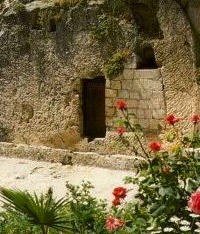 The day is and should be the most calm and quiet day of the entire Church year, a day broken by no liturgical function. Christ lies in the grave, the Church sits near and mourns. After the great battle He is resting in peace, but upon Him we see the scars of intense suffering…The mortal wounds on His Body remain visible…Jesus’ enemies are still furious, attempting to obliterate the very memory of the Lord by lies and slander.
The day is and should be the most calm and quiet day of the entire Church year, a day broken by no liturgical function. Christ lies in the grave, the Church sits near and mourns. After the great battle He is resting in peace, but upon Him we see the scars of intense suffering…The mortal wounds on His Body remain visible…Jesus’ enemies are still furious, attempting to obliterate the very memory of the Lord by lies and slander.
https://www.catholicculture.org/culture/liturgicalyear/calendar/day.cfm?date=2020-04-11
April 12th Easter Sunday
“I rose up and am still with Thee.”
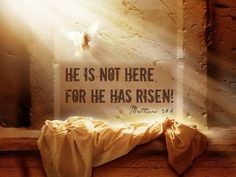 Easter is the feast of feasts, the unalloyed joy and gladness of all Christians. Easter means, then, Redemption obtained — sin destroyed, death overcome, divine life brought back to us, the resurrection of our body which is promised immortality. With such a certitude, we should banish all trace of sadness! “This is the day which the Lord has made.” Christ has promised that He will come again with glory to take us with Him into the kingdom of His Father. Through His Cross He entered into the possession of eternal glory. Christ has gained the crown of victory; through Christ humanity also win their crowns of victory. “He is risen.” The resurrection of Christ is a pledge of our own resurrection. It is the foundation upon which our faith rests. It is the guarantee of our redemption and God’s assurance that our sins are forgiven and that we are called to eternal life. “This is the day which the Lord hath made; let us be glad and rejoice therein”. Alleluia! Alleluia!
Easter is the feast of feasts, the unalloyed joy and gladness of all Christians. Easter means, then, Redemption obtained — sin destroyed, death overcome, divine life brought back to us, the resurrection of our body which is promised immortality. With such a certitude, we should banish all trace of sadness! “This is the day which the Lord has made.” Christ has promised that He will come again with glory to take us with Him into the kingdom of His Father. Through His Cross He entered into the possession of eternal glory. Christ has gained the crown of victory; through Christ humanity also win their crowns of victory. “He is risen.” The resurrection of Christ is a pledge of our own resurrection. It is the foundation upon which our faith rests. It is the guarantee of our redemption and God’s assurance that our sins are forgiven and that we are called to eternal life. “This is the day which the Lord hath made; let us be glad and rejoice therein”. Alleluia! Alleluia!
The feast of St. Bernadette, which is ordinarily celebrated today, is superseded by the Easter liturgy.
April 13th Easter Octave
The first eight days of the Easter season form the Easter octave and are celebrated as solemnities of the Lord. Each day is another little Easter. The Alleluia verse is repeated throughout the octave: “This is the day the Lord has made; let us rejoice and be glad. Alleluia!”
The Gospel continues to relate the story of Christ’s resurrection — how Mary Magdalene and the other Mary meet Jesus.
April 19th Second Sunday of Easter (Divine Mercy Sunday)
“I shall sing forever the Lord’s mercy”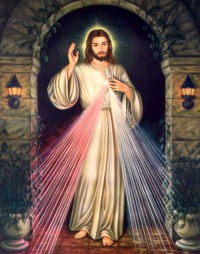
This Sunday is popularly known as Divine Mercy Sunday. Between 1930 and 1938 Christ appeared to Sister Faustina, a Sister of Mercy in Poland who initiated the Divine Mercy devotion. She was canonized on April 30, 2000, the Sunday after Easter, the Feast of Divine Mercy. On Good Friday, 1937, Jesus requested that Blessed Faustina make a special novena before the Feast of Mercy, from Good Friday through the following Saturday. Jesus also asked that a picture be painted according to the vision of Himself as the fountain of mercy. He gave her a chaplet to be recited and said that it was appropriate to pray the chaplet at three o’clock each afternoon (the Hour of Great Mercy).
Jesus to Sr. Faustina
On one occasion, I heard these words: “My daughter, tell the whole world about My inconceivable mercy. I desire that the Feast of Mercy be a refuge and shelter for all souls, and especially for poor sinners. On that day the very depths of My tender mercy are open. I pour out a whole ocean of graces upon those souls who approach the fount of My mercy. The soul that will go to Confession and receive Holy Communion shall obtain complete forgiveness of sins and punishment. On that day all the divine floodgates through which graces flow are opened. Let no soul fear to draw near to Me, even though its sins be as scarlet. My mercy is so great that no mind, be it of man or of angel, will be able to fathom it throughout all eternity. Everything that exists has come forth from the very depths of My most tender mercy. Every soul in its relation to Me will contemplate My love and mercy throughout eternity. The Feast of Mercy emerged from My very depths of tenderness. It is My desire that it be solemnly celebrated on the first Sunday after Easter. Mankind will not have peace until it turns to the Fount of My Mercy.
“[Let] the greatest sinners place their trust in My mercy. They have the right before others to trust in the abyss of My mercy. My daughter, write about My mercy towards tormented souls. Souls that make an appeal to My mercy delight Me. To such souls I grant even more graces than they ask. I cannot punish even the greatest sinner if he makes an appeal to My compassion, but on the contrary, I justify him in My unfathomable and inscrutable mercy. Write: before I come as a just Judge, I first open wide the door of My mercy. He who refuses to pass through the door of My mercy must pass through the door of My justice.
“From all My wounds, like from streams, mercy flows for souls, but the wound in My Heart is the fountain of unfathomable mercy. From this fountain spring all graces for souls. The flames of compassion burn Me. I desire greatly to pour them out upon souls. Speak to the whole world about My mercy.”
https://www.catholicculture.org/culture/liturgicalyear/calendar/day.cfm?date=2020-04-19
April 25th Feast of St. Mark, evangelist
St. Mark, the author of the second Gospel, was the son of Mary whose house at Jerusalem was the meeting place of Christians. He was baptized and instructed by St. Peter. In about the year 42 A.D. he came to Rome with the Prince of the Apostles. There at the request of the faithful he wrote his Gospel about the year 50 A.D. His Gospel is a record of St. Peter’s preaching about Our Lord and pays special attention to the head of the Apostles. The Gospel was written for Roman Gentile converts. It rarely quotes the Old Testament, and is careful to explain Jewish customs, rites and words. It excels in portraying the emotions and affections of both Christ and His hearers. St. Mark preached in Egypt, especially in Alexandria and was martyred there by the heathen.
Other Dates & Important Notices / Dátaí Eile & Fógraí Tábhachtach:
Where to find Mass On-Line: https://www.churchservices.tv/ which has details of Mass and services using webscams. Also check in with your local parish as some parishes are using the facility of Facebook to live stream Masses, Adoration, Prayers Services.
April 25th – Knock Virtual Pilgrimage
Following the Government’s decision/guidance on COV-19 this year’s annual Diocesan Knock Pilgrimage 2020 will be postponed until further notice. At the heart of this difficult decision is the welfare of our pilgrims. Instead people are invited to join in the Masses in Knock and visit the Apparition Chapel all online on Saturday, 25 April. To watch live or see previous ceremonies please click https://www.knockshrine.ie/watch-live.html
Trócaire On-Line for Holy Week
On Holy Week, the most reflective week in the Church’s year, we are inviting you to attend two interactive workshops online. We will hold these workshops on the Monday and Wednesday of Holy Week, in final preparation for the Easter Triduum.
Prayer and Reflective Workshop
On Monday, 6th April at 11.00am, Trócaire will have a prayer/reflective workshop for families. To register please contact Anna Keegan on anna.keegan@trocaire.org and Anna will then send you on the webinar link.
Laudato Sí/Caring for our Common Home Workshop
On Wednesday, 8th of April at 11.00am, Trócaire will hold a workshop on Laudato Sí/Caring for our Common Home. To register, please contact Jane Mellett on jane.mellett@trocaire.org and Jane will then send on the webinar link.
Resources:
The support you give to Trócaire is an act of solidarity with the people we support at a global level, and we truly are living in a time when it is clear just how connected our world is and how dependent we are on each other.
It is important that we continue to support people like Madris and Angela, the women on this year’s box, who face great challenges with courage every day, even in these unprecedented times for ourselves. With that in mind, let us direct you to our resource page on our Trócaire website, where you can read and pray our resources from your own space at home.
These include prayers, stations of the cross, homily notes and resources for children. https://www.trocaire.org/resources/parishes
National Association of Diocesan Advisers (NAPPDA)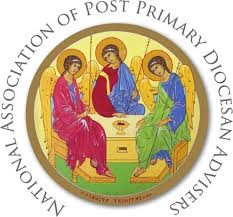
As a member of the NAPPDA executive I have been working with my fellow Diocesan Advisers from around the country and compiling some useful resources for teachers and chaplains to use with their schools and parishes during these unprecedented times. I am cognisant of the plethora of resources available to you all at this time and it is not my intention to over burden you. However, these are ones we feel will be particularly useful to keep a faith element present for ourselves and those to whom we are called to minister. We continue to hold you all in our prayers.
1. This is a list of services that have been made available for free for the duration of the COVID-19 pandemic and is being continuously updated.
Twitter: @ShaneHastingsIE Email: giveback@shanehastings.eu
https://covid19.shanehastings.eu/giveback/?fbclid=IwAR2aXv6PMsc_NVIBONZz18o4whJs9CpIz729NxIU4KqEkpz0rfo-eN-X6L4
2. R.E. Today is the British Association of R.E. teachers and includes lots of helpful material.
https://clicks.retoday-email.co.uk/email_content.php?token2=3nXeT2F1sSJUPafLcgVioh-VFqbB4X1JjZQm6MuPueM1oTuVDqpEI7sfzpZkqRo0lFMCdSCq41JJG4xE7M4vCQ..
3. The Department of Education and Skills have helpful material on Wellbeing –https://www.education.ie/en/Education-Staff/Services/Employee-Assistance-Wellbeing-Programme/Employee-Assistance-Wellbeing-Programme.html
4. The Covid-19 Way of the Cross shared by Fr. Ger Condon, Diocese of Cloyne.
Covid19 Way of the cross.pdf
5. Catholic Religious Women from around the Globe have developed a wonderful resource specifically aimed at supporting RE teachers. It’s called GSR in the Classroom. Currently their site hosts excellent lesson plans, encompassing good discussion questions, stories, testimonies, scripture passages, suggested actions, links to YouTube clips and concluding prayers on the following topics:
I. Lent (6 lessons)/ Environment (6 lessons)/ Human Trafficking (6 lessons) /Migration (6 lessons) /Race Relations (6 lessons)/ Vocations (6 lessons).
II. The methodology of each lesson is the same and simple. Each follows Tom Groome’s approach of going from life to faith to life and I am confident that both you and your students will find the material inspiring. I am also confident that they will support you support your students gain a better understanding of the related issues, i.e. from a religious education and humanitarian perspective. There are also great cross curricular links within RE and with other subjects, e.g. geography, business, history. Everything you require for a lesson (some could cover two class periods) can be found in one downloadable handout (pdf), which you can email to your students pre or post lesson if you wish. Links to YouTube clips are also embedded further limiting demands on you. There is also a teacher guide for each lesson (clearly written by an experienced teacher) but given your own formation and experience as an RE Teacher and the quality of each handout, you may not require this. To source these lessons plans, teacher guides etc. go to: www.globalsistersreport.org/classroom
6. Dynamic Catholic is a site designed to re-energize the Catholic Church by developing world-class resources that inspire people to rediscover the genius of Catholicism. https://dynamiccatholic.com/
7. Check out the short movie entitled ‘The Veil Removed’ – The Veil Removed is a short film that reveals the coming together of heaven and earth at Mass, as seen by saints and mystics, revealed by scripture and in the catechism of the Catholic Church.
https://www.youtube.com/watch?v=OOLZDaTgIaM
8. Check the website of the National Episcopal Conference for relevant prayers for this time at: https://www.catholicbishops.ie/2020/03/16/prayer-resources-for-use-during-the-coronavirus-pandemic/
9. Brendan McManus Ten Ignatian Tips for Coping with Coronavirus: A spirituality for strange times.
https://www.jesuit.ie/news/a-spirituality-for-strange-times/
10. See tips for students preparing for state exams and the Ceist resource for prayer.
https://www.jesuit.ie/news/a-spirituality-for-strange-times/
11. The Religion Teacher website offers lots of free printable student worksheets on Lent/Sunday Readings which Parents could use at home with students?
https://www.thereligionteacher.com/coronavirus/?utm_source=The+Religion+Teacher+Newsletter+List&utm_campaign=d4465f87fa-TRT%3A+Weekly+Newsletter+3-22-20&utm_medium=email&utm_term=0_a52a2eb0e6-d4465f87fa-326505809&mc_cid=d4465f87fa&mc_eid=ad74739f08
12. Saint Corona, patron saint of resisting epidemics
https://www.reuters.com/article/us-health-coronavirus-germany-saint/german-cathedral-dusts-off-relics-of-st-corona-patron-of-epidemics-idUSKBN21C2PM
13. On-Line Prayer
https://www.sacredspace.ie All you need is a phone!
14. This daily 3-Minute Retreat is a short prayer break at your computer that can give you 24 hours of peace. You’ll find this specifically on https://www.loyolapress.com/3-minute-retreats-daily-online-prayer
15. Taize Prayer can be accessed each evening at 7.30 directly from Taize Facebook page at https://www.facebook.com/taize/
16. Next Sunday’s Scripture readings- Sunday of the Word of God see http://www.tarsus.ie
FOR REFLECTIONS TO ACCOMPANY US DURING THIS TIME OF CHALLENGE see: https://www.ceist.ie/
